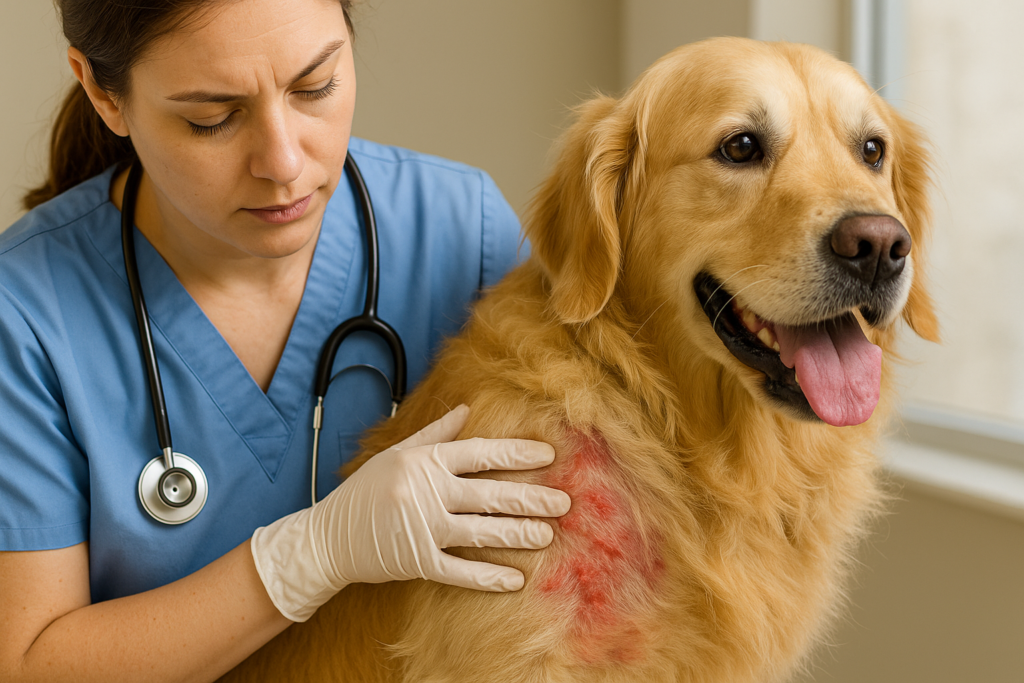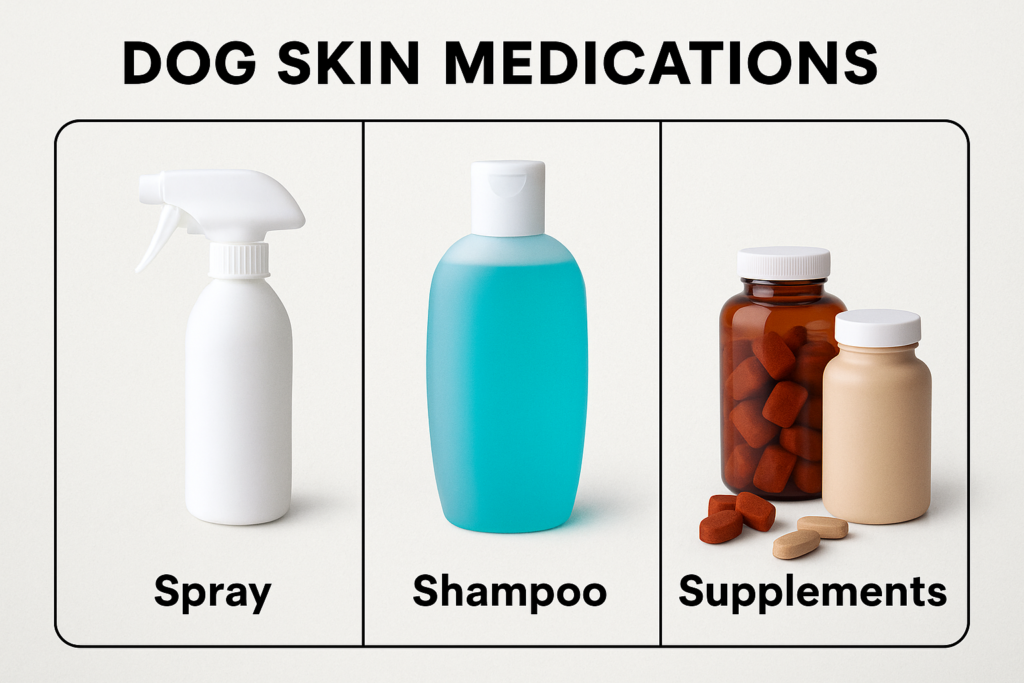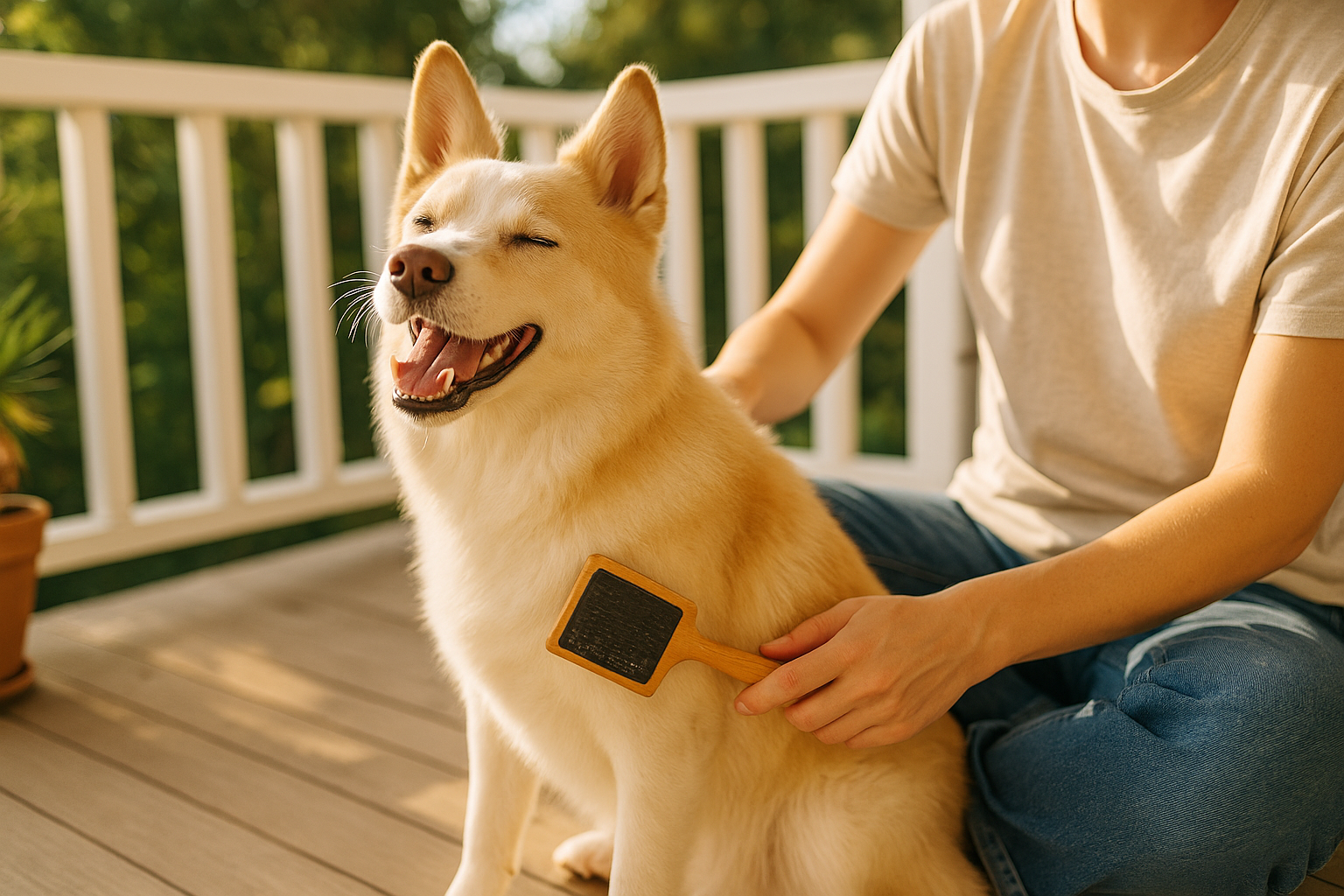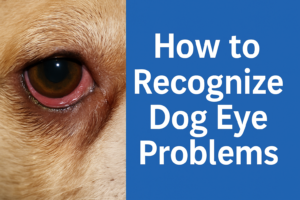Medical Disclaimer: This article provides general information for educational purposes only. It is not a substitute for professional veterinary advice. Always consult your veterinarian for any dog skin conditions.
Table of Contents
If your dog won’t stop scratching, licking, or chewing at their skin, you’re not alone. As a small-animal vet in Ottawa, I see dog skin conditions in the exam room nearly every day. These issues can range from mild rashes to full-blown infections — and they can develop fast. Knowing what’s normal (and what’s not) can help you catch problems early and get your dog the care they need.
🐾 Key Takeaways: Dog Skin Conditions at a Glance
Quick facts every dog owner should know:
- Dog skin conditions are common and affect all breeds and ages. The most frequent issues include allergies, hot spots, mange, ringworm, and pyoderma.
- Signs to watch for: excessive scratching, hair loss, red or scaly patches, and foul-smelling sores.
- Most skin problems are secondary — they often stem from allergies, parasites, or immune issues.
- Prompt veterinary care matters. Delayed treatment can worsen infections or lead to recurring flare-ups.
- Prevention is possible with good grooming, parasite control, allergy management, and nutrition.
- Some skin issues are contagious to other pets or people (like mange and ringworm), so isolation and hygiene are key.
Why Skin Health Matters in Dogs
The skin is the largest organ in your dog’s body and often the first place disease shows up. Healthy skin is smooth, flexible, and covered by a glossy coat with minimal shedding. When I examine a patient with skin issues, I’m not just treating the surface — I’m often diagnosing deeper problems like allergies, parasites, or hormonal imbalances.
In Canadian clinics, dog skin conditions make up a large part of general practice. Studies show skin-related complaints account for up to 1 in 4 vet visits. Many of these issues are chronic, meaning they come and go if not managed well. Over time, repeated scratching or infections can damage the skin’s natural barrier, leading to more serious problems.
Understanding and acting on early signs is crucial. Many dog skin conditions can be managed — or even prevented — with the right care, nutrition, and veterinary support.
Common Dog Skin Issues at a Glance
Below is a quick-reference table covering the five most common dog skin conditions, including symptoms, causes, and whether they’re contagious.
| Condition | Primary Symptoms | Main Cause | Contagious to Humans? |
|---|---|---|---|
| Canine Allergies | Itchy bumps, redness, face/paw licking, ear infections | Immune reaction to allergens (food, pollen, fleas) | No |
| Hot Spots | Moist, raw, red sores; foul odor; hair loss | Self-trauma from itching due to allergies/insects | No |
| Mange | Intense itching, bald spots, crusts, odor | Mites (Demodex, Sarcoptes, Cheyletiella) | Yes (some types) |
| Ringworm | Circular bald patches, flaky/red skin, nail issues | Fungal infection (dermatophytes) | Yes |
| Pyoderma | Pustules, red bumps, crusting, scaling | Bacterial overgrowth after skin damage | No |
These dog skin conditions often overlap. For example, an allergic reaction can lead to hot spots or pyoderma. That’s why an accurate diagnosis is so important.
1. Canine Allergies (Allergic Dermatitis)

Also see: https://doglifeexpert.com/the-ultimate-guide-to-dog-dental-care/
Signs and Diagnosis
Allergies are among the most common dog skin conditions I treat in-clinic. They cause intense itching, often around the face, ears, paws, and belly. Dogs may bite, chew, or lick themselves raw. You might also notice hair loss, red skin, or frequent ear infections.
Food allergies can also cause vomiting or diarrhea. Diagnosis often involves rule-outs (e.g. fleas, infections), allergy testing, or elimination diets.
Common Allergens
- Environmental: Pollen, dust mites, mold, cleaning products, grasses
- Food: Proteins like beef, chicken, soy, wheat
- Fleas: A single flea bite can trigger Flea Allergy Dermatitis (FAD)
Veterinary Treatments
- Medications: Apoquel, Cytopoint, corticosteroids, antihistamines
- Antibiotics: For secondary skin infections (e.g. pyoderma)
- Hypoallergenic diets: Hydrolyzed or novel protein
- Immunotherapy: Allergy desensitization injections
- Laser therapy: Speeds up skin healing
Home Care & Prevention
- Use allergen-removing shampoos (e.g., Douxo S3 Calm)
- Bathe frequently if prescribed
- Vacuum and wash dog bedding weekly
- Try supplements: Omega-3s, biotin, vitamin E
- Consistent flea prevention (e.g., Simparica Trio, Bravecto)
🧪 5-Minute Home Allergy Checklist
- Does your dog lick paws or rub face daily?
- Have you ruled out fleas?
- Any recent food change?
- Are seasonal symptoms recurring?
- Are there chronic ear infections?
Allergies are one of the few dog skin conditions that require lifelong management — not just treatment.
2. Hot Spots (Acute Moist Dermatitis)

What They Look Like
Hot spots are red, raw, and inflamed areas that often ooze or scab over. They appear suddenly and worsen quickly. I’ve seen a small irritation turn into a palm-sized sore overnight, especially in Golden Retrievers and Labs. Common locations include the neck, hips, and thighs.
Common Triggers
- Insect bites (fleas, mosquitoes)
- Allergies (especially environmental or flea-related)
- Moisture trapped in thick coats after swimming
- Skin infections, ear infections
- Anxiety or boredom (self-licking behavior)
Veterinary Treatment
- Clipping and cleaning the area
- Topical sprays or antibiotics
- Oral anti-itch meds (e.g., Apoquel)
- E-collar to prevent further trauma
- Treating underlying cause (e.g., flea control, diet)
Home Care & Prevention
- Dry your dog thoroughly after baths or swims
- Regular grooming, especially in long-coated breeds
- Use flea/tick prevention monthly
- Address stress and boredom with toys or more activity
- Give omega-3s to support skin barrier
Hot spots are one of the most distressing dog skin conditions because of how painful and fast they progress. Early intervention is critical.
3. Mange (Parasitic Skin Infection)
Types of Mange
Mange refers to several dog skin conditions caused by microscopic mites. These include:
- Sarcoptic Mange (Scabies): Intense itching; highly contagious to dogs and humans
- Demodectic Mange: Hair loss; not usually contagious, linked to immune issues
- Cheyletiella (Walking Dandruff): Flaky skin, visible moving mites
- Otodectic Mange (Ear Mites): Causes head shaking, dark ear debris
Symptoms & Diagnosis
Most dogs show extreme itching, hair loss, red or scaly skin, and sometimes crusts or foul odors. Diagnosis is made via skin scrapings, microscope exams, or PCR tests. In some cases, a treatment trial is needed.
In one case, I treated a rescue dog whose mange was so severe it masked a deeper issue: hypothyroidism. This shows how mange can signal broader immune dysfunction.
Veterinary Treatments

- Topicals: Lime sulfur dips, amitraz, selamectin
- Oral meds: Ivermectin, milbemycin, or isoxazolines (e.g. NexGard)
- Antibiotics: For secondary infections
- Treat underlying immune problems
Home Care & Prevention
- Wash all bedding and toys weekly
- Treat all pets in the household
- Quarantine infected animals
- Avoid contact with strays or wildlife
- Use year-round parasite prevention
Mange is one of the more serious dog skin conditions, especially sarcoptic and Cheyletiella types due to their zoonotic potential.
4. Ringworm (Fungal Skin Infection)
Symptoms & Transmission
Despite its name, ringworm is not a worm — it’s a fungal infection that spreads easily. Look for circular bald patches, red or flaky skin, and brittle nails. It’s not always itchy but can cause discomfort. It often affects the face, ears, and paws.
This is one of the few dog skin conditions that’s contagious to both humans and other pets. Spores can live on surfaces for months. I’ve had to manage entire-house decontaminations for ringworm outbreaks, especially in multi-pet homes.
Veterinary Treatments
- Topical antifungals: Miconazole, clotrimazole creams
- Medicated baths: Twice weekly with antifungal shampoos
- Oral meds: Itraconazole or terbinafine for 6–8 weeks minimum
- Laser therapy: In some cases, used to speed up healing
Home Care & Prevention
- Isolate infected dog
- Disinfect surfaces with diluted bleach or accelerated hydrogen peroxide
- Wash bedding and clothing in hot water
- Vacuum daily (dispose of bag after use)
- Wear gloves when handling infected animals
Because of its public health risk, ringworm is one of the most serious dog skin conditions when it comes to environmental hygiene and household safety.
5. Pyoderma (Bacterial Skin Infection)
Types of Pyoderma
This common bacterial infection can be:
- Superficial: Affects top skin layers; looks like red pimples or scabs
- Deep: Involves hair follicles; more painful, sometimes ulcerated
- Puppy pyoderma: Mild form seen in young dogs, usually self-resolves
Signs and Diagnosis
Pyoderma often begins subtly but can escalate quickly if not addressed. The most recognizable signs include red, raised bumps (papules), pus-filled pimples (pustules), and crusty rings of flaky skin called epidermal collarettes — which often indicate a resolving pustule. You may also notice areas of hair loss (alopecia), especially on the belly, groin, armpits, and chin. In more severe cases, the skin becomes inflamed, thickened, and may give off a foul or musty odor.
Itching isn’t always present, which is why some cases go unnoticed at first. However, dogs may still lick or scratch mildly, especially in sensitive areas. If left untreated, lesions can worsen, deepen, or even form ulcers.
Diagnosis is typically made through skin cytology, where your vet presses a microscope slide to the lesion or collects a swab, then examines the sample for bacteria under the microscope. In recurrent or deep cases, your vet may recommend a bacterial culture and sensitivity test to determine the exact bacteria and best antibiotic.
In my own practice, I’ve found that pyoderma is rarely a stand-alone issue. It’s usually a symptom of something deeper. The most common underlying triggers include allergies (environmental or food), flea infestations, or hormonal imbalances like hypothyroidism or Cushing’s disease. If we don’t treat the root cause, the skin infection will likely return — often more resistant and harder to treat.
This is why pyoderma is considered one of the most common secondary dog skin conditions, and why accurate diagnosis is so important to long-term success.
Treatment Plan

- Oral antibiotics: Like cephalexin or amoxicillin-clavulanate
- Medicated baths: Chlorhexidine or benzoyl peroxide shampoos
- Topicals: Antibacterial creams, sprays
- Address underlying cause: allergies, parasites, hypothyroidism
Home Care & Prevention
- Bathe regularly with vet-approved shampoo
- Prevent scratching with anti-itch meds or an E-collar
- Stick to flea and tick prevention
- Manage allergies or hormonal diseases
- Feed a balanced diet with immune-supportive nutrients
Pyoderma is one of those dog skin conditions that recurs if the root cause isn’t treated — not just the infection.
Skin Health Support: Diet, Grooming & Supplements
Good skin starts from the inside out. Many chronic dog skin conditions can be eased — or prevented — with the right diet, grooming habits, and supplements.
Nutrition for Healthy Skin
- Omega-3 & 6 Fatty Acids: Reduce inflammation and strengthen the skin barrier (e.g., Grizzly Salmon Oil)
- Biotin: Helps with dry, flaky skin and hair regrowth
- Zinc & Vitamin E: Support overall skin health and healing
- Protein: High-quality animal protein fuels coat and skin regeneration
Grooming Best Practices
- Brush regularly: Especially for long-haired breeds
- Bathe as needed: Use hypoallergenic or medicated shampoos only
- Avoid human products: They disrupt your dog’s skin pH
- Dry thoroughly: After swimming or bathing to prevent hot spots
Environmental Tips
- Vacuum and wash dog bedding weekly
- Keep humidity moderate in winter
- Avoid contact with lawn chemicals or irritants
- Wipe paws after walks if allergens are high
I often recommend a gentle oatmeal shampoo and fish oil supplement for dogs with recurrent mild skin flare-ups. These changes alone can make a noticeable difference in many cases.
Cost of Treating Dog Skin Conditions in Canada
Veterinary costs for dog skin conditions can vary widely based on severity, location, and whether your dog needs lab tests, medications, or sedation for diagnostics.
| Service | Estimated Cost (CAD) |
|---|---|
| Vet exam (initial visit) | $80–$120 |
| Skin scraping or cytology | $45–$90 |
| Allergy testing (intradermal/serum) | $300–$500 |
| Medications (oral/topical) | $30–$150 per month |
| Medicated shampoos | $25–$50 |
| Antibiotics for pyoderma | $40–$100 for 2–4 weeks |
| Fungal culture (ringworm) | $100–$200 |
| Mange treatment (oral/topical) | $100–$250 |
| Laser therapy (per session) | $50–$100 |
| Full dermatology referral | $500+ |
Always ask your vet for an estimate before starting treatment. For chronic dog skin conditions, investing in preventive care (nutrition, flea control, hypoallergenic diets) often reduces long-term costs.
At-Home Skin Check: 5-Minute Routine
Catching dog skin conditions early makes a big difference. Use this quick weekly check to spot issues before they escalate.
🕵️♀️ Inspect Your Dog From Nose to Tail
- Look for red patches, bald spots, scabs, or bumps
- Check ears for odor, discharge, or redness
- Gently part fur to examine skin, especially under legs and belly
- Feel for lumps or crusty patches
- Smell the skin — any foul or yeasty odor?
🐾 Check Behavior Clues
- Excessive licking, chewing, or scratching
- Rubbing face, scooting, or shaking head
- Restlessness or frequent grooming
- Changes in coat quality (greasy, dull, flaky)
If you notice any new or worsening signs, book a veterinary visit promptly. Most dog skin conditions respond best when caught early.
FAQs About Dog Skin Conditions
1. What is the most common dog skin condition?
Allergies, including flea, food, and environmental allergies, are the most frequent cause of skin issues in dogs. They often lead to secondary problems like hot spots or pyoderma.
2. Can I treat my dog’s skin infection at home?
Mild cases may improve with medicated shampoos or dietary changes, but most dog skin conditions require a vet’s diagnosis and prescription medications for full resolution.
3. Are skin issues contagious to other pets or people?
Some are. Mange (sarcoptic and Cheyletiella) and ringworm can spread to humans and other animals. Isolate infected dogs and follow strict hygiene.
4. Why does my dog keep getting hot spots?
Hot spots are usually secondary to an underlying issue like allergies, moisture, fleas, or stress. Unless the root cause is managed, they’ll likely return.
5. Do supplements really help with skin conditions?
Yes — omega fatty acids, biotin, and zinc can strengthen the skin barrier, reduce inflammation, and support coat health, especially for allergic dogs.
6. How do vets diagnose dog skin conditions?
Common tools include skin scrapings, cytology, allergy testing, food trials, and blood work to rule out hormonal problems. Diagnosis often requires ruling out causes one by one.
Final Tips: Prevention Is the Best Cure
Most dog skin conditions can be managed — and many can be prevented — with a proactive approach. Here’s how to protect your pup long-term:
- Maintain a consistent parasite prevention plan year-round (fleas, ticks, mites)
- Feed a balanced diet rich in protein, omega fatty acids, and essential nutrients
- Brush regularly and bathe when needed using gentle, vet-approved products
- Watch for early signs like itching, licking, or flaky skin and act quickly
- Schedule regular vet checkups, especially for dogs with recurring issues
- Use supplements wisely, with veterinary guidance
As a vet, I’ve seen how early intervention and owner awareness can stop mild skin issues from spiraling into serious health problems. Your dog’s skin tells a story — be sure you’re listening.





Pingback: Ultimate Dog Dental Care Guide: 7 Proven Tips & Vet Costs